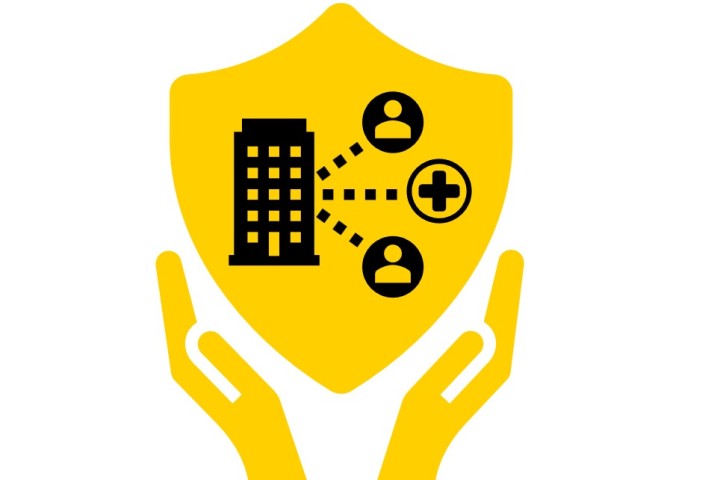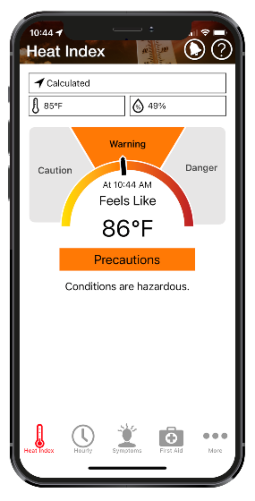OHS is the type of safety program that helps design, implement, and manage comprehensive health and safety programs for the university that protect and enhance the health and well-being of the campus community as well as continually improve safety in occupational, research, educational, and living environments. The OHS program at Cal State LA identifies potential hazards and ensures that employees have the training, safety equipment, and other resources needed to work safely.
Emergency Contact Information
FOR ANY LIFE-THREATENING EMERGENCIES, CALL 911.
For urgencies during working hours (7:30 AM to 4:30 PM)
Please call (323) 343-3531 from any mobile device or use extension 3-3531 from any campus phone.
After business hour urgencies (after 5:00 pm & weekends)
Please call (323) 343-3700 from any mobile device or extension 3-3700 from any campus phone.
*To report an unsafe condition, file a 'Report a Safety Concern', email RMEHS, or call (323) 343-3531*
Reporting Hazards Documents
- Employee Report of Occupational Injury or Illness (IIPP App. 8.4)
- Hazard Incident Report Form (IIPP App. 8.2)
- Report a Safety Concern (Online Form)
- Supervisor Report of Occupational Injury or Illness (IIPP App. 8.3)
Types of OHS Hazards

These are hazards that can lead to diseases, infections, and other serious health conditions.
- I.e., mold and fungi, blood and other bodily fluids, bacteria, viruses, sewage, and vermin. Using Personal Protective Equipment (PPE) is vital to preventing exposure to biological hazards and protecting your health.
These are hazards that can be inhaled as gases or vapors, or come in contact with skin as a liquid or solid. They can cause skin irritation, burns, respiratory problems, blindness, or other serious health complications.
- I.e., Chemicals such as cleaning products, acids, pesticides, and petroleum products need to be handled responsibly with proper PPE to prevent exposure.
These are hazards that put a strain on muscles, tendons, and other connective tissues of the body. They can result from bad posture, not using dollies or other mechanical assistance, and repetitive or awkward lifting/movement. They can lead to musculoskeletal injuries such as muscle sprains, ruptured or herniated discs, and carpal tunnel.
These are hazards that are caused by environmental factors leading to injuries.
- I.e., exposed electrical wiring, falling objects, wet floors, and other conditions that can cause slips, falls, cuts, or other injuries. Some physical hazards don’t necessarily need to make physical contact to cause harm, such as excessive noise levels, heat, and pressure.
Safety Topics
The information below represents the different OHS topics and their associated training information that are based on the hazards when working. If you have any questions or need additional guidance, please submit a 'Request RMEHS Service' form.
A confined space is any space that is large enough for an employee to enter, has a restricted means of entry or exit, and is not designed for continuous employee occupancy. Examples of confined spaces include tanks, pits, certain tunnels, utility vaults, and boilers.
Training Requirements
When working in confined spaces, the following training is required before commencing work.
- Course: Confined Space-Cal/OSHA
- Course Code: SKLFST_ehs_cal_a41_sh_enus-77101290
- Access: CSU Learn
- Frequency: Annually
Additional Information
- Supervisor Safety Checklist (Confined Space App. B)
- Confined Space Entry Permit (Confined Space App. C)
- Non‐Permit Entry Certification (Confined Space App. D)
Working with electricity can be dangerous. Engineers, electricians, and other professionals who work with electricity directly should be mindful of exposure to dangers such as electric shock, electrocution, fires, and explosions.
Electrical Hazards Training
Below is a general video for electrical hazards and how to respond in case of an emergency. Specific electrical safety training may be required based on the type of work. If you need more guidance or certified training, please submit a 'Request for RMEHS Service.'
Electrical Hazards Awareness
Electrical Safety
Electrical Safety Resources
- High Voltage Switching Procedures & Receipt (Elect. App. A)
- Energized Electrical Work Permit (Elect. App. C)
- Safety Meeting Documentation Checklist (Elect. App. D)
An emergency plan specifies procedures for handling sudden or unexpected situations. The objective is to be prepared to:
- Prevent fatalities and injuries.
- Reduce damage to buildings and equipment.
- Safeguard campus community members.
More information regarding Emergencies on campus can be found on Cal State LA's Emergency Preparedness webpage.
Emergency Awareness Training
This course is intended as a guidance on emergency preparedness, but by no means is all-inclusive, more information on how to be more involved during an emergency should be directed to the Office of Emergency Preparedness at Cal State LA. The aim is to empower all CSU community members to respond effectively during crisis situations.
- Course: CSU-EMERGENCY PROCEDURES
- Course Code: CSU-SCORM-EMERPRO
- Access: CSU Learn
- Frequency: Every 2 years
Emergency Action Plan Resources
- Disabled Procedures During Evacuation
- Emergency Checklist Form (AP 408 App. 8.3)
- Evacuation Drill Evaluation Form (AP 408 App. 8.4)
- Fire Extinguisher Readiness
Ergonomics is the scientific approach to designing work environments and job tasks in a way that aligns with the natural capabilities and limitations of the human body. This is done to minimize the risk of injuries, which can result from various ergonomic stressors, such as awkward postures, repetitive motions, or excessive force. The core principle of ergonomics is to "fit the job to the person," ensuring that the work is conducive to human comfort and safety, rather than requiring individuals to adapt uncomfortably to their tasks.
Ergonomic Awareness Training for Better Work
The training below is intended to provide additional guidance and minor adjustments to prevent injury while working. If additional adjustments are needed, please submit an Ergonomic Evaluation Request Form.
For Custodians
- Course: CSU - Manual Material Handling Ergonomics for Custodians
- Course Code: _scorm12_spcentralsta_csucustodianergo
- Access: CSU Learn
- Frequency: When needed
For Office Workers
- Course: CSU - COMPUTER WORKSTATION ERGONOMICS
- Course Code: _scorm12_spcentralsta_computerergo
- Access: CSU Learn
- Frequency: When needed
Ergonomic Resources
Fire protection encompasses actions and strategies designed to prevent, mitigate, or extinguish fires. These measures include safety drills, fire risk education, workplace inspections, fire-resistant construction, safe operations, and maintenance of fire suppression systems. Fire safety is essential for reducing injuries and property damage resulting from fires. It's not only legally mandated but also important for the safety of all individuals present in a building during a fire emergency.
Fire Awareness Training
The following training information is meant to inform campus members about dealing with wildfire smoke, a potential concern at Cal State LA during periods of drought and high heat. Understanding how to handle fire-related emergencies is crucial in ensuring the safety of the campus community.
- Course: Protection from Wildfire Smoke (CSU)
- Course Code: CSU-SCORM-ProtectionFromWildfireSmoke
- Access: CSU Learn
More information regarding fire protection and fire extinguishers on campus can be found on Cal State LA's Emergency Preparedness webpage.
Fire Protection Resources
Heat stress can lead to serious health issues, including heat exhaustion or heatstroke. When working in hot climates, precautions like staying hydrated, taking regular breaks in the shade, wearing appropriate clothing, and monitoring for signs of heat-related illnesses are crucial to prevent heat-related injuries.
Heat Stress Awareness
The following video is intended to help preventative measures when working in hot climates. Additional and/or certified safety training may be required based on the work hazards associated.
Download the OSHA/NIOSH Heat Stress Safety Tool
The OSHA-NIOSH Heat Safety Tool is a useful resource for planning outdoor work activities based on how hot it feels throughout the day. It has a real-time heat index and hourly forecasts specific to your location with OSHA and NIOSH recommendations for safety.
Heat Stress Resources
An IIPP (Injury and Illness Prevention Program) is a fundamental written safety program for the workplace. Despite its simplicity, it is the most effective means to enhance workplace safety and health. It can help lower costs related to employee illnesses, injuries, and, regulatory fines.
Required Training
- Course: CSU Injury Illness Prevention Program
- Course Code: CALSTATELA-CURRIC-IIPP
- Access: CSU Learn
- Frequency: Once
Health and Safety Performance
Ladder safety is important both in professional and home settings. To prevent ladder-related accidents and protect lives, it's essential to follow key steps: select the appropriate ladder, conduct pre-use inspections, set it up correctly, maintain three-point contact, avoid overloading, use it as intended, and keep the work area free from obstructions.
Ladder Safety Training
The following course is intended to provide information on using a ladder safely while ensuring proper inspection before starting any project.
- Course: LADDER SAFETY 2.0
- Course Code: CALSTATELA-CURRI-LS
- Access: CSU Learn
- Frequency: Annually
Ladder Safety Resources
- Annual Ladder Inspection Form (Ladder Safety App. 9.1)
The purpose of a LOTO is to protect employees from machines and equipment that can cause injury due to unexpected energization, release of stored energy, or the start-up of equipment while an employee is performing maintenance or servicing equipment.
LOTO Training
The informational video below describes the importance of LOTO as well as steps to ensure proper maintenance without the risk of injury. All workers should refer to their department's procedures when locking out machines for repair. Any adjustments to the LOTO procedures must be communicated to all those who are affected by a machine that is out of order.
LOTO Resources
- LOTO Audit Form (LOTO App. B)
Personal protective equipment, commonly referred to as “PPE”, is equipment worn to minimize exposure to a variety of hazards. Examples of PPE include such items as gloves, foot, and eye protection, protective hearing devices (earplugs, muffs) hard hats, respirators, and full-body suits.
Choosing the Right PPE Training
The training below is designed to help choose the right PPE for the job to minimize exposure to hazards in the workplace. Other resources for selecting PPE can be found on chemical Safety Data Sheets (SDSs) or manufacturer guidance/instruction manuals.
- Course: CSU-Selecting PPE
- Course Code: CSU-SCORM-SELECTINGPPE
- Access: CSU Learn
Respiratory Protection Equipment
Respiratory Protective Equipment (RPE) is a particular type of Personal Protective Equipment (PPE), used to protect the individual wearer against the inhalation of hazardous substances in the workplace air.
Respiratory Protection Training Requirements
The information below is the training required to use a respiratory device voluntarily based on the work hazards for your space.
Please Note: The following components must be fulfilled in order to be respirator-qualified.
- Training
- COURSE NAME: N95 Respirator Use (CSU)
- FOR STUDENTS
- CSUBridge Course Code: _scorm12_spcentralsta_csu_n95respirator
- FOR EMPLOYEES
- CSULearn Course Code: CSU-SCORM-N95RESPIRATOR
- N95 Respirator Request Form (Online) – Email a copy of the N95 online training “Certificate of Completion” when submitting the N95 Respirator Request form.
PPE Resources
- Respirator Cleaning Log (Resp. Prot. App. A)
- Respirator Fit Test Log (Resp. Prot. App. B)
- Search for Safety Data Sheets (SDSs)
- Tele-Tower Scaffold Checklist (Portable Scaffold App 8.1)
- Perry Scaffold Checklist (Portable Scaffold App 8.2)
Hot work safety is crucial because it helps prevent fires and explosions by implementing precautions when conducting activities like welding, cutting, or grinding that generate heat and sparks. These safety measures are essential to protect lives, campus community, and the environment.
Hot Works Training Requirements
The training courses below are required before any hot work can commence.
- Course: Welding, Cutting, and Brazing
- Course Code: ehs_hsf_d09_sh_enus
- Access: CSU Learn
- Frequency: Annually
- Course: Welding Impact: PPE Requirements
- Course Code: ehs_ci_a43_sh_enus
- Access: CSU Learn
- Frequency: Annually
Hot Works Resources
- Hot Work Permit (Weld./Cut./Hot Work App. 8.1)
- NFPA Fact Sheet- Hot Work Safety
